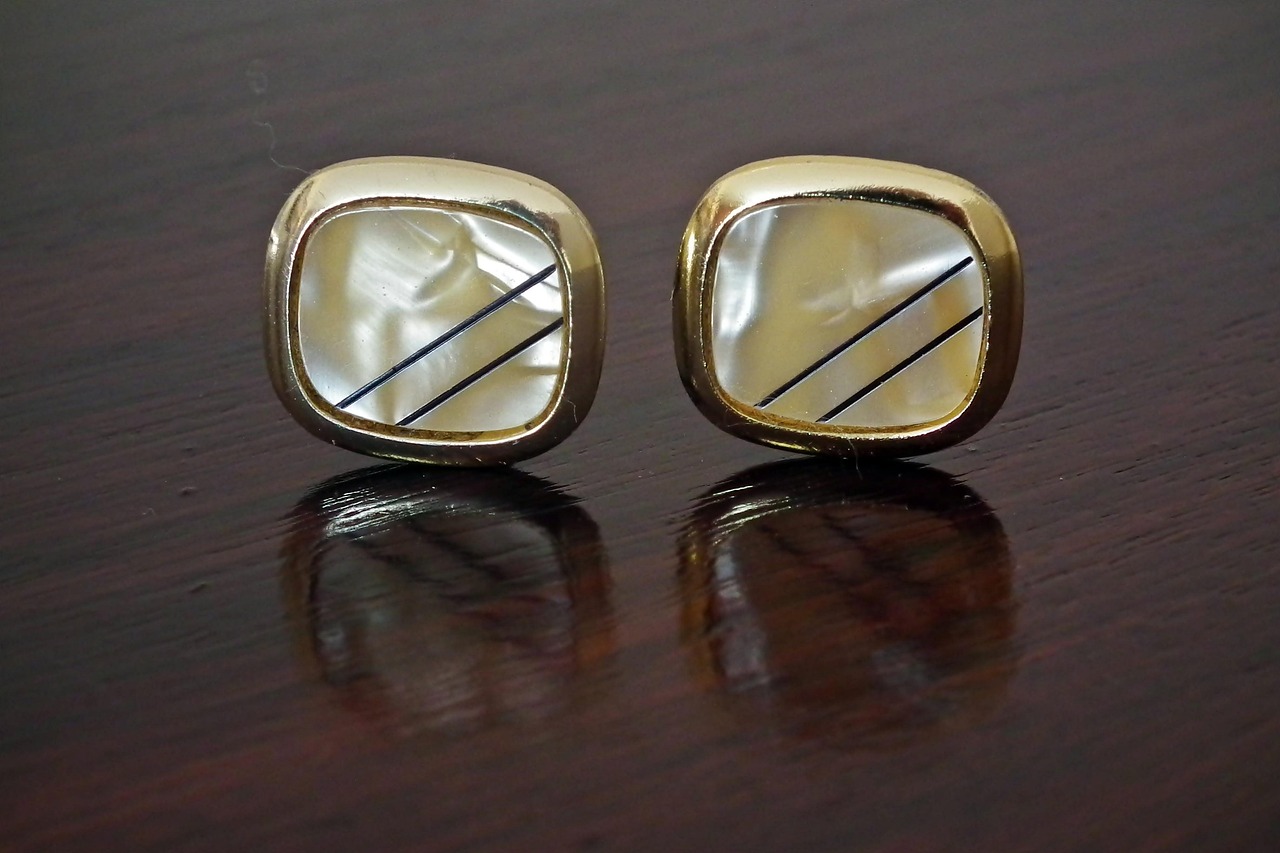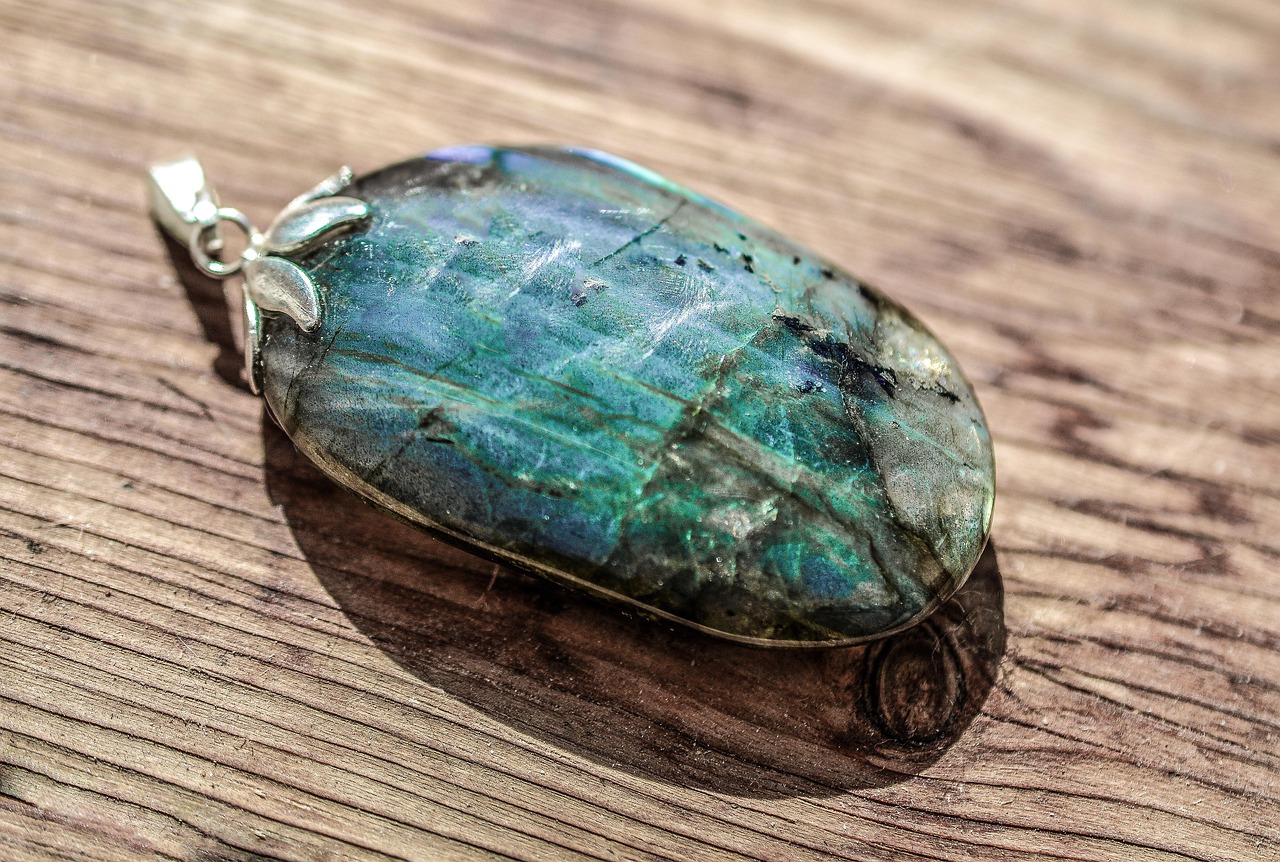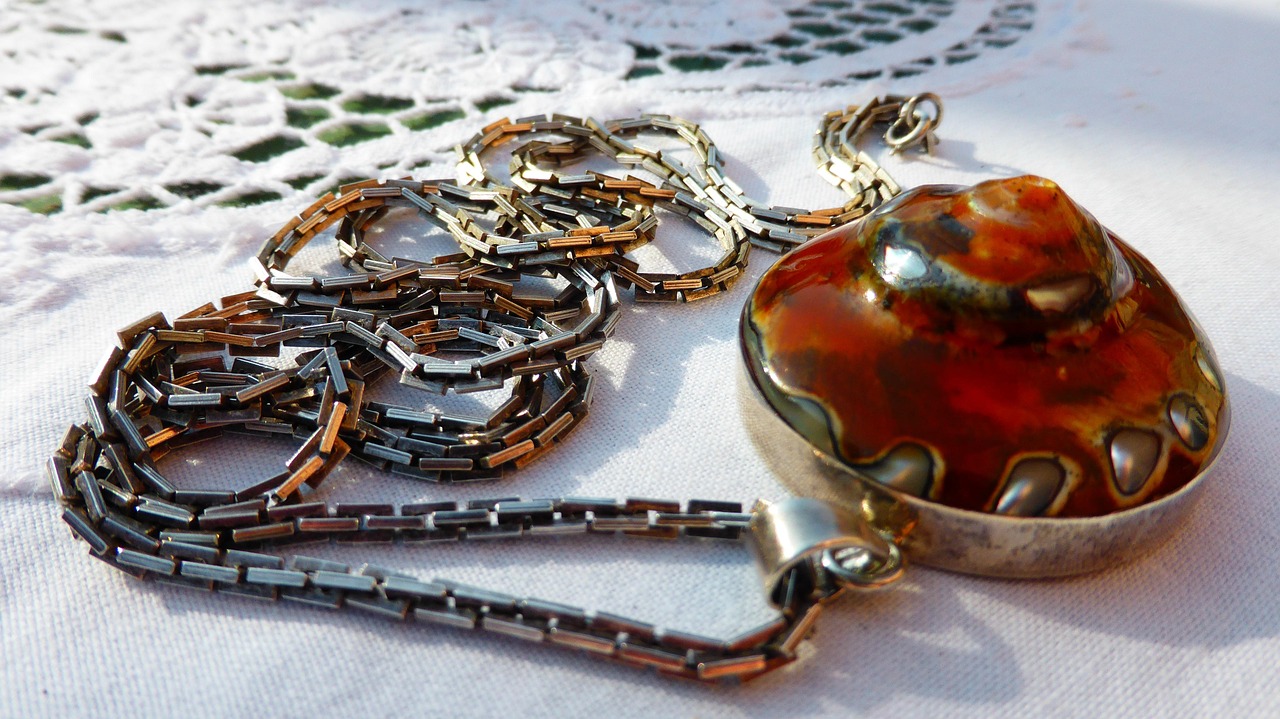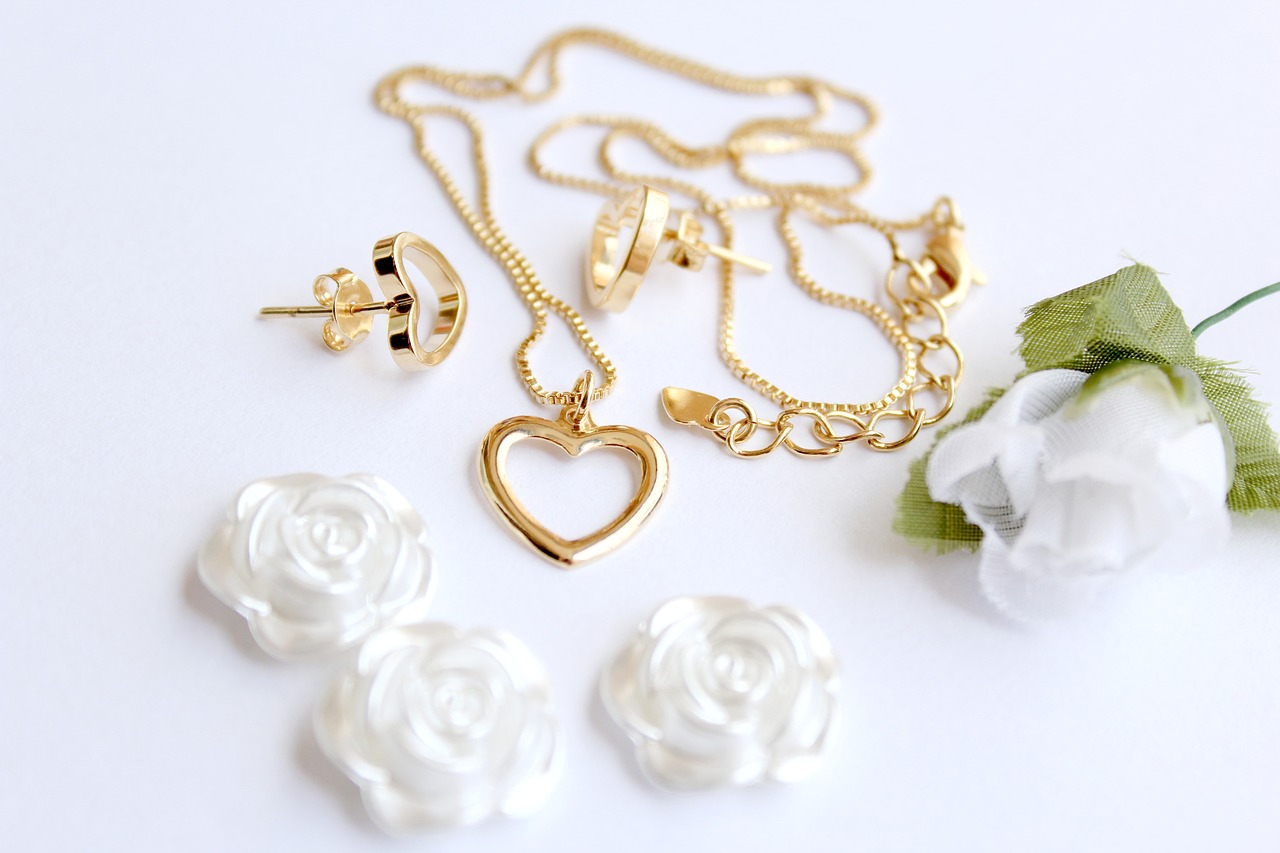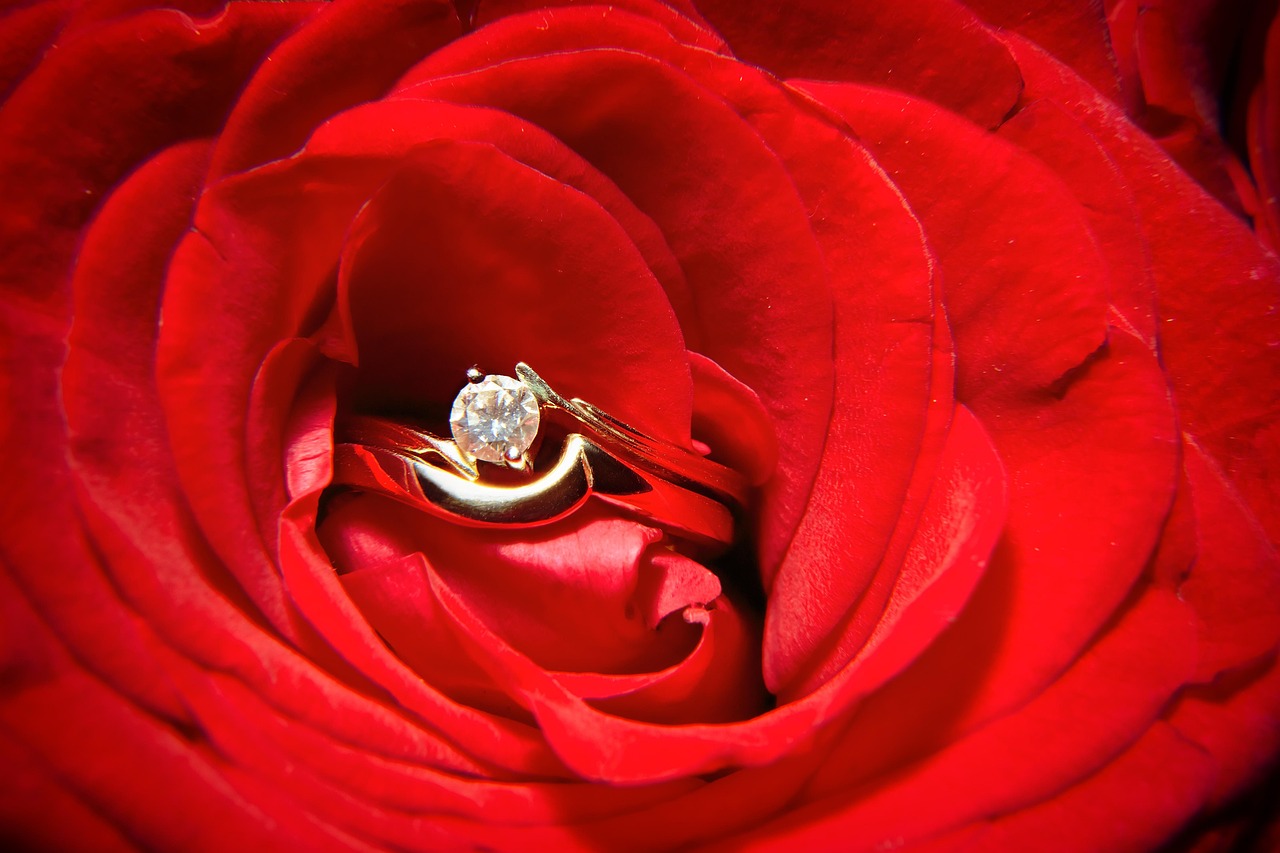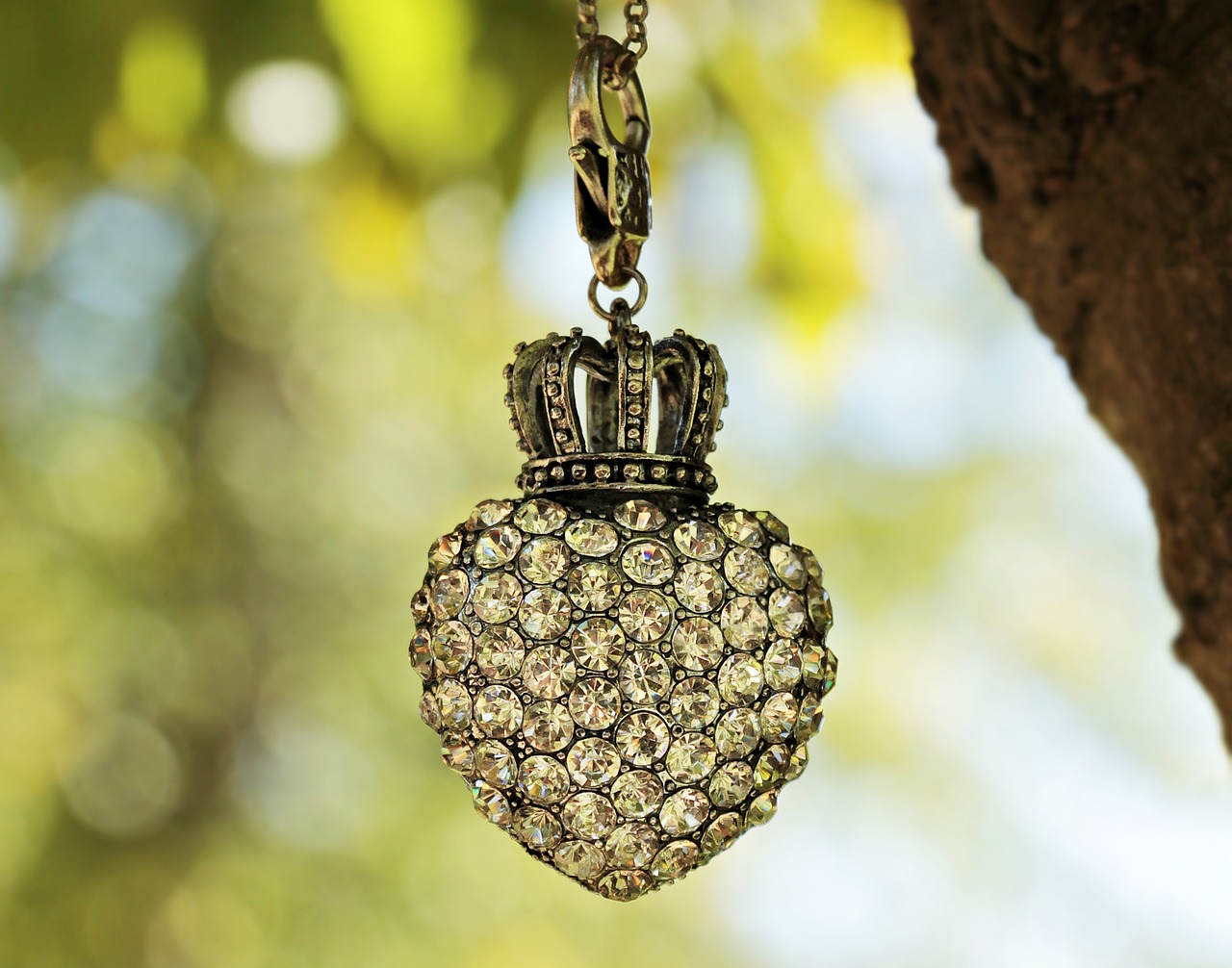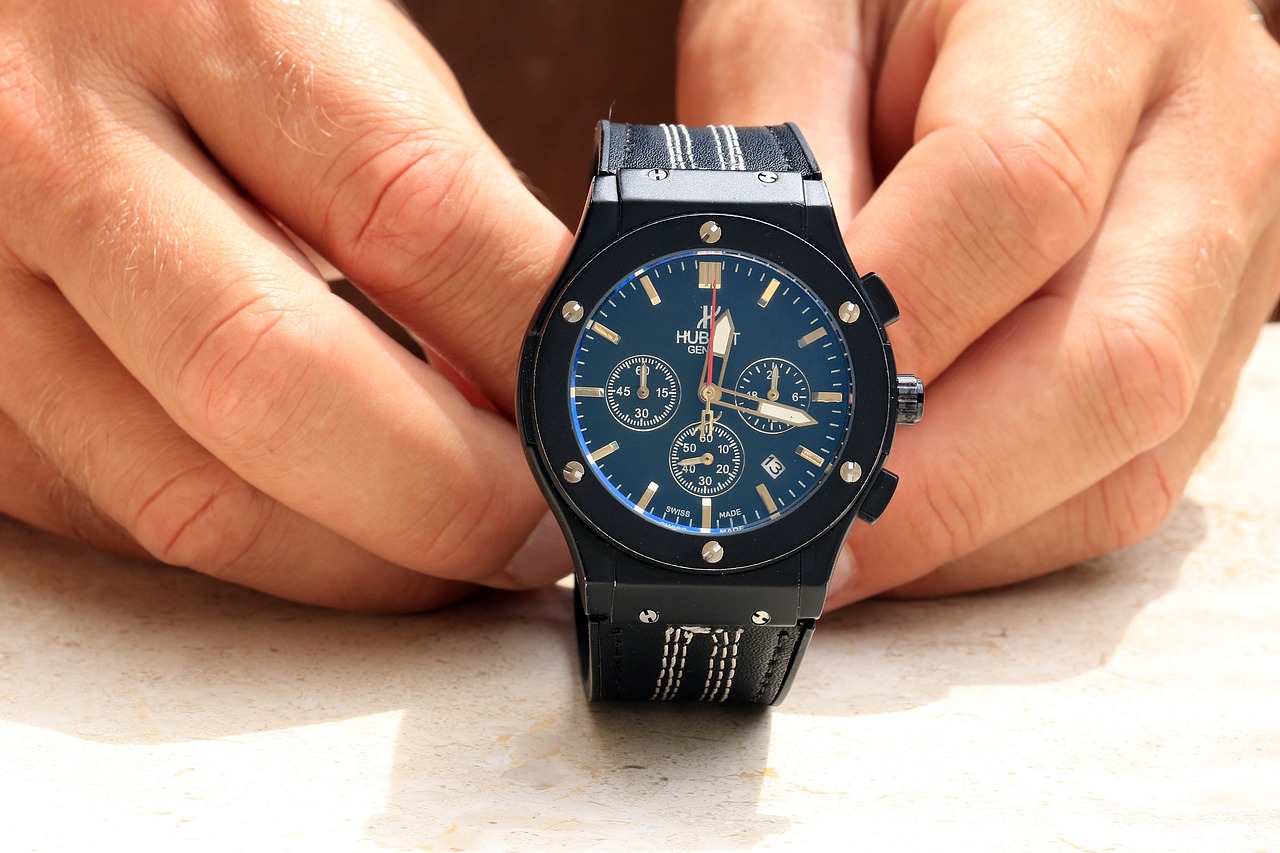This article explores the essential aspects of purchasing investment-grade diamonds, providing insights on market trends, valuation, and best practices to ensure profitable investments.
What Are Investment-Grade Diamonds?
Investment-grade diamonds are defined by their exceptional quality, rarity, and potential for appreciation. These diamonds typically possess high grades in the 4Cs—cut, color, clarity, and carat weight. Understanding these attributes is crucial for investors looking to make informed decisions.
Why Invest in Diamonds?
- Diversification: Investing in diamonds can diversify your portfolio beyond traditional assets.
- Inflation Hedge: Diamonds often retain value during economic downturns, making them a safe haven.
- Potential Appreciation: The value of high-quality diamonds can appreciate significantly over time.
Market Demand and Trends
Analyzing market demand and trends is essential for making informed investment decisions. Currently, there is a growing trend toward ethically sourced and lab-grown diamonds, which could impact the traditional diamond market. Understanding these shifts can help investors identify lucrative opportunities.
Global Economic Factors
The diamond market is significantly influenced by global economic conditions. Factors such as currency fluctuations, consumer spending, and geopolitical stability can impact supply and demand, thereby affecting prices.
Consumer Preferences
Shifts in consumer preferences also play a vital role in the diamond market. For instance, younger generations are increasingly favoring unique and personalized jewelry, which can affect the desirability of certain diamond types. Staying informed about these trends can enhance investment strategies.
Understanding Diamond Grading
Knowledge of diamond grading is essential for investors. The 4Cs—cut, color, clarity, and carat weight—are critical factors that determine a diamond’s quality and value. Familiarity with these grading criteria can help investors choose diamonds that offer the best potential for appreciation.
How to Choose the Right Diamond
Choosing the right diamond involves careful consideration of various factors:
- Setting a Budget: Establishing a realistic budget is crucial for any investment.
- Researching Reputable Dealers: Finding a trustworthy dealer is vital for a successful purchase. Look for dealers with positive reviews and industry certifications.
What to Look for in Certification
Certification is essential for verifying a diamond’s quality. Reputable grading reports from recognized institutions provide assurance of a diamond’s value. Investors should prioritize diamonds with certificates from well-known grading labs.
Understanding Different Grading Labs
Different grading labs have varying reputations. The Gemological Institute of America (GIA) and the American Gem Society (AGS) are among the most respected. Familiarizing yourself with these institutions can significantly impact your investment decisions.
Importance of Appraisals
Professional appraisals provide additional assurance of value. Obtaining appraisals from certified gemologists can help investors understand the true worth of their diamonds.
How to Store and Insure Your Diamonds
Proper storage and insurance are crucial for protecting your investment:
- Safe Storage Options: Consider options like safe deposit boxes or home safes to ensure security.
- Insurance Considerations: Insuring your diamonds protects against loss and damage, providing peace of mind.
What Are the Risks of Investing in Diamonds?
Understanding the risks involved in diamond investment is essential. The diamond market can be volatile, influenced by factors such as economic conditions and consumer trends.
- Market Volatility: Price fluctuations can occur due to changes in supply and demand.
- Liquidity Concerns: Selling diamonds can be challenging, and understanding the market can help navigate these challenges.

What Are Investment-Grade Diamonds?
When considering investments, understanding the definition of investment-grade diamonds is essential for potential investors. These diamonds are not just aesthetically pleasing; they embody specific qualities that enhance their desirability and value in the market. But what exactly qualifies a diamond as investment-grade?
Investment-grade diamonds are typically defined by their adherence to the 4Cs: cut, color, clarity, and carat weight. Each of these factors plays a crucial role in determining a diamond’s overall quality and, consequently, its market value. For instance, a diamond with an excellent cut will reflect light beautifully, enhancing its brilliance and attractiveness. Similarly, diamonds with fewer inclusions (clarity) and a higher color grade are more sought after, making them more valuable.
Moreover, the rarity of certain diamonds also contributes to their investment-grade status. Fancy colored diamonds, for example, are considered particularly valuable due to their limited supply and unique hues. Investors should be aware that not all diamonds appreciate in value; thus, selecting the right diamond is crucial for ensuring a profitable investment.
Another important aspect of investment-grade diamonds is their certification. Reputable grading labs, such as the Gemological Institute of America (GIA) and the American Gem Society (AGS), provide detailed reports that verify a diamond’s quality. These certifications are essential for investors, as they offer assurance regarding the diamond’s characteristics and authenticity. Without proper certification, the value of a diamond can be uncertain, making it a risky investment.
Additionally, the market demand for diamonds can fluctuate based on trends, economic conditions, and consumer preferences. Understanding these trends is vital for investors looking to make informed decisions. For example, during economic downturns, luxury items like diamonds may see a dip in demand. Conversely, in times of economic growth, the demand for high-quality diamonds often increases, leading to potential appreciation in value.
Investing in diamonds not only provides a tangible asset but also serves as a hedge against inflation. As the value of currency fluctuates, high-quality diamonds tend to maintain their value, making them a stable investment choice. This aspect is particularly appealing to investors seeking to diversify their portfolios beyond traditional assets such as stocks and bonds.
In conclusion, understanding what constitutes investment-grade diamonds is crucial for anyone looking to invest in this market. By focusing on the 4Cs, ensuring proper certification, and staying informed about market trends, investors can navigate the diamond market more effectively. With careful consideration and research, investing in diamonds can be a rewarding venture.

Why Invest in Diamonds?
Investing in diamonds is an increasingly popular strategy for diversifying investment portfolios. This precious stone not only serves as a symbol of luxury and love but also offers unique financial benefits that can enhance overall investment performance. Understanding the reasons behind diamond investment can provide valuable insights for potential investors.
Diamonds are often viewed as a stable asset that can withstand market fluctuations. Their value is influenced by various factors, including demand, rarity, and quality. Unlike traditional stocks and bonds, diamonds are tangible assets that can appreciate over time, making them an attractive option for investors seeking to safeguard their wealth.
One of the most compelling reasons to invest in diamonds is their potential for appreciation. Over the years, diamonds have shown a tendency to increase in value, particularly those of higher quality. According to industry experts, investment-grade diamonds can appreciate significantly, especially during economic uncertainty when investors seek reliable stores of value.
Another critical benefit of investing in diamonds is their ability to act as a hedge against inflation. As inflation rises, the purchasing power of currency declines, making it essential for investors to seek out assets that retain value. Diamonds, being a finite resource, often maintain their value or even appreciate in times of inflation, making them a smart choice for long-term investment.
The diamond market is influenced by various trends and consumer preferences. Analyzing these trends can help investors make informed decisions. For instance, the rise of lab-grown diamonds has introduced new dynamics into the market, affecting the value of natural diamonds. Understanding these trends is crucial for investors looking to capitalize on market movements.
Global economic conditions play a significant role in determining the value of diamonds. Factors such as economic growth, geopolitical stability, and consumer spending habits all impact demand. In times of economic prosperity, luxury items like diamonds often see increased demand, driving up prices. Conversely, during economic downturns, the market can experience fluctuations that investors need to be aware of.
Shifts in consumer preferences also affect the desirability and value of diamonds. For example, millennials are increasingly valuing ethical sourcing and sustainability, which can influence the types of diamonds that are in demand. Investors should stay informed about these trends to align their investments with consumer interests.
Knowledge of diamond grading is essential for any investor. The 4Cs—cut, color, clarity, and carat weight—are critical factors that determine a diamond’s quality and value. Understanding these attributes can help investors make better purchasing decisions and ensure they are investing in high-quality stones that will appreciate over time.
When selecting investment-grade diamonds, it is crucial to consider various factors. Setting a realistic budget, researching reputable dealers, and understanding certification are all vital steps in the process. Investors should also be aware of the importance of obtaining appraisals to verify the value of their diamonds.
Once an investment in diamonds is made, proper storage and insurance are essential for protecting the asset. Safe storage options, such as bank safety deposit boxes or specialized vaults, can safeguard diamonds against theft or damage. Furthermore, insuring diamonds against loss or damage provides an added layer of security for investors.
In conclusion, investing in diamonds presents a unique opportunity for diversifying a portfolio. With their potential for appreciation and ability to hedge against inflation, diamonds can be a valuable asset in uncertain economic times. By understanding market trends, consumer preferences, and the intricacies of diamond grading, investors can make informed decisions that lead to successful investments.
Market Demand and Trends
play a crucial role in shaping investment decisions in the diamond industry. As investors seek to maximize their returns, understanding the current trends driving the diamond market becomes essential. This section will explore various factors influencing market demand, including economic conditions, consumer preferences, and emerging trends.
The diamond market has witnessed significant changes over the past few years. One of the most notable trends is the increasing interest in ethical and sustainable sourcing. Consumers are becoming more conscious of the origins of their diamonds, leading to a rise in demand for conflict-free and lab-grown diamonds. This shift not only affects consumer purchasing behavior but also influences the overall market dynamics.
- Ethical Sourcing: The demand for ethically sourced diamonds is on the rise, as consumers increasingly prioritize sustainability. Investors should consider this trend, as it may impact the long-term value of diamonds that do not meet these ethical standards.
- Lab-Grown Diamonds: The popularity of lab-grown diamonds has surged, offering a more affordable and environmentally friendly alternative. While these diamonds typically sell for less than their natural counterparts, their growing acceptance could reshape investment strategies.
- Luxury Market Resilience: Despite economic fluctuations, the luxury market, including diamonds, has shown resilience. High-net-worth individuals continue to invest in diamonds as a form of wealth preservation, indicating a stable demand in this sector.
Furthermore, global economic factors significantly impact diamond prices. Economic stability and growth in emerging markets can lead to increased demand for luxury goods, including diamonds. Conversely, economic downturns may lead to reduced spending on non-essential items, which can negatively affect the diamond market.
Another critical aspect to consider is shifting consumer preferences. Younger generations are driving changes in the market, favoring unique and personalized pieces over traditional diamond jewelry. This trend has led to an increase in demand for custom designs and alternative diamond shapes, which can influence investment potential.
Additionally, technological advancements in diamond grading and certification are enhancing transparency in the market. Investors now have access to more reliable information regarding diamond quality, which can help them make informed decisions. The rise of online platforms for buying and selling diamonds has also increased market accessibility, allowing investors to reach a broader audience.
In summary, analyzing the current is vital for investors looking to navigate the diamond market effectively. By understanding the influence of ethical sourcing, consumer preferences, and economic factors, investors can make informed decisions that align with market dynamics. Staying abreast of these trends not only enhances investment strategies but also positions investors to capitalize on emerging opportunities in the diamond industry.
Global Economic Factors
play a pivotal role in shaping the dynamics of the diamond market. Understanding how these factors influence demand and supply can help investors make informed decisions when purchasing investment-grade diamonds.
The diamond market is inherently linked to the overall economic climate. When the global economy is thriving, consumer confidence typically rises, leading to an increase in spending on luxury items, including diamonds. Conversely, during economic downturns, demand for diamonds often diminishes as consumers prioritize essential goods over luxury purchases. This inverse relationship between economic health and diamond sales is crucial for investors to recognize.
One of the primary economic indicators that affect diamond prices is GDP growth. Countries with robust economic growth often see a surge in demand for luxury goods. For instance, in regions like Asia, particularly in China and India, rising middle-class affluence has significantly increased the appetite for diamonds. As these economies continue to expand, the demand for investment-grade diamonds is expected to grow, thereby driving up prices.
Another critical factor is inflation rates. High inflation can erode purchasing power, leading consumers to seek tangible assets like diamonds as a hedge against currency devaluation. This trend often results in increased demand for diamonds, pushing prices higher. Investors should closely monitor inflation trends, as they can signal potential price shifts in the diamond market.
Interest rates also play a significant role in the diamond industry. When interest rates are low, borrowing becomes more accessible, encouraging consumers to finance luxury purchases, including diamonds. Conversely, higher interest rates can lead to increased costs of borrowing, making it less appealing for consumers to invest in luxury items. Thus, fluctuations in interest rates can directly impact diamond demand and, consequently, prices.
The global supply chain also affects the diamond market. Political instability in diamond-producing regions can disrupt supply, leading to increased prices. For example, countries in Africa, which are significant suppliers of diamonds, can face challenges such as conflict or regulatory changes that impact production levels. Investors should remain aware of geopolitical events and their potential effects on diamond supply.
Furthermore, the rise of sustainable and ethical sourcing has introduced new dynamics into the diamond market. Consumers are becoming increasingly conscious of the origins of their purchases, leading to a growing demand for conflict-free and ethically sourced diamonds. This shift in consumer preference can influence prices, as ethically sourced diamonds may command a premium due to their perceived value.
In conclusion, global economic factors are instrumental in shaping the diamond market. By understanding how GDP growth, inflation, interest rates, supply chain dynamics, and consumer preferences interact, investors can better navigate the complexities of diamond investment. Staying informed about these economic indicators will enable investors to make strategic decisions that align with market trends and maximize their investment potential.
Consumer Preferences
In the ever-evolving world of investment, play a pivotal role in determining the value of assets, including diamonds. As tastes and trends shift, the desirability of specific diamond types can fluctuate, impacting their investment potential. This article delves into how changing consumer preferences influence the diamond market and what investors should consider when making their purchases.
Consumer preferences are shaped by a variety of factors, including cultural influences, fashion trends, and even social media. For instance, millennials and Gen Z have shown a growing interest in ethically sourced and lab-grown diamonds, which has started to reshape the traditional diamond market. This shift is not merely a trend but a significant change in how consumers value diamonds.
Fashion cycles can have a profound impact on the desirability of certain diamond styles. For example, vintage cuts such as Old European or Art Deco diamonds have seen a resurgence in popularity, often due to their unique aesthetic and historical significance. Conversely, more traditional cuts like the round brilliant may experience fluctuations in demand based on current fashion trends.
Social media platforms have become powerful tools for influencing consumer behavior. Influencers and celebrities showcasing specific diamond styles can lead to increased demand for those particular types. For instance, a viral post featuring a specific diamond cut can create a surge in interest, thereby impacting its market value.
Today’s consumers are increasingly concerned about the ethical implications of their purchases. This has led to a rise in the popularity of lab-grown diamonds, which are perceived as more sustainable and conflict-free. As consumer awareness grows, investors must consider how these ethical preferences can affect the value of traditional mined diamonds.
Understanding shifts in consumer preferences is essential for investors looking to maximize their returns. By keeping a close eye on market trends, investors can make informed decisions about which diamond types to acquire. It is crucial to adapt investment strategies to align with changing consumer tastes. For example, investing in ethically sourced diamonds may offer better long-term value as consumer preferences continue to evolve.
In summary, the diamond market is significantly influenced by consumer preferences, which can shift due to various factors, including fashion trends, social media, and ethical considerations. Investors must remain vigilant and adaptable to these changes to ensure their investments remain valuable. By understanding these dynamics, investors can make more informed decisions and potentially reap greater rewards in the ever-changing landscape of diamond investment.
Understanding Diamond Grading
When it comes to investing in diamonds, understanding the intricacies of diamond grading is paramount. The 4Cs—cut, color, clarity, and carat weight—serve as the foundation for evaluating a diamond’s overall quality and value. Each of these characteristics plays a significant role in determining not only the aesthetic appeal of the diamond but also its market price.
The cut of a diamond refers to how well it has been shaped and faceted. This characteristic is crucial because it affects how light interacts with the diamond, influencing its brilliance and sparkle. A well-cut diamond will reflect light beautifully, making it more desirable. On the other hand, a poorly cut diamond may appear dull, regardless of its other qualities. The cut is often considered the most important of the 4Cs, as it can significantly impact the diamond’s value.
Diamonds come in a range of colors, from completely colorless to shades of yellow and brown. The color grading scale typically ranges from D (colorless) to Z (light yellow). Colorless diamonds are the most sought after and command higher prices. Investors should be aware that even slight differences in color can lead to substantial variations in value. Therefore, selecting a diamond with a higher color grade can be a wise investment decision.
Clarity refers to the presence of inclusions or blemishes in a diamond. The clarity scale ranges from Flawless (no inclusions visible under 10x magnification) to Included (inclusions visible to the naked eye). Higher clarity grades typically result in higher value. Investors should consider clarity carefully, as even small imperfections can affect a diamond’s beauty and resale potential.
Carat weight measures how much a diamond weighs. One carat is equivalent to 200 milligrams. While larger diamonds are generally more valuable, the increase in price is not linear. For example, a 2-carat diamond can be significantly more expensive than two 1-carat diamonds, due to its rarity. Understanding how carat weight affects value is essential for making informed investment decisions.
When investing in diamonds, it is vital to assess the 4Cs collectively rather than in isolation. A diamond with an excellent cut but lower clarity may still be more valuable than a higher clarity diamond with a poor cut. Investors should seek diamonds that strike a balance among the 4Cs to ensure they are making a sound investment.
Always look for diamonds that come with a grading certificate from a reputable gemological laboratory. This certification provides an unbiased evaluation of the diamond’s 4Cs and assures buyers of its quality. Recognized labs include the Gemological Institute of America (GIA) and the American Gem Society (AGS). A certified diamond not only enhances trust but also aids in future resale.
In summary, understanding the 4Cs—cut, color, clarity, and carat weight—is essential for anyone looking to invest in diamonds. Each characteristic contributes to the diamond’s overall value and desirability, making it crucial for investors to educate themselves on these factors. Armed with this knowledge, investors can make informed decisions that align with their financial goals.

How to Choose the Right Diamond
When it comes to investing in diamonds, making the right choice is essential. The diamond market is complex, and understanding how to select the right diamond can significantly impact your investment’s success. This section will outline the key criteria to consider when choosing investment-grade diamonds, ensuring you make informed decisions that align with your financial goals.
- Quality of the Diamond: The quality of a diamond is primarily assessed using the 4Cs: cut, color, clarity, and carat weight. Each of these characteristics plays a crucial role in determining the diamond’s overall value. A well-cut diamond reflects light beautifully, while color and clarity influence its rarity and desirability.
- Market Trends: Understanding current market trends is vital. Research how economic conditions, consumer preferences, and emerging trends affect diamond prices. For instance, the rise in popularity of lab-grown diamonds may influence the market for natural diamonds.
- Certification: Always choose diamonds that come with a reputable grading certificate. Certificates from recognized grading labs, such as the GIA or AGS, provide assurance of the diamond’s quality and can significantly affect its resale value.
- Investment Potential: Consider the diamond’s potential for appreciation. Some diamonds, like rare colored stones, may offer better long-term investment opportunities compared to standard white diamonds.
- Source of Purchase: Selecting a reliable dealer is crucial. Research potential dealers, read reviews, and ensure they have a good reputation in the industry. A trustworthy dealer will provide transparency regarding the diamond’s characteristics and history.
Establishing a realistic budget is critical when investing in diamonds. Start by determining how much you are willing to invest, keeping in mind that high-quality diamonds often come at a premium. It’s advisable to allocate a portion of your investment portfolio to diamonds, balancing risk and potential return.
Finding a trustworthy dealer ensures that you are making a safe investment. Look for dealers who are members of recognized trade organizations and have positive customer feedback. A reputable dealer will provide you with detailed information about the diamond, including its certification and appraisal history.
Certification is a crucial aspect of diamond purchasing. Look for grading reports that detail the diamond’s 4Cs and ensure they are issued by a reputable lab. This certification not only verifies the diamond’s quality but also enhances its resale value.
Proper storage and insurance are essential for protecting your diamond investment. Store your diamonds in a secure location, such as a safe deposit box or a home safe, to prevent theft or damage. Additionally, consider insuring your diamonds to protect against loss or damage, ensuring your investment is safeguarded.
By considering these factors when choosing an investment-grade diamond, you can make informed decisions that align with your financial objectives. Investing in diamonds can be a rewarding venture, provided you approach it with the right knowledge and resources.
Setting a Budget
When it comes to investing in diamonds, establishing a budget is not just important; it is crucial. A well-defined budget allows you to navigate the intricate diamond market with confidence and clarity. This section will guide you through the process of setting a realistic budget for purchasing investment-grade diamonds.
Setting a budget helps you avoid overspending and ensures that your investment aligns with your financial goals. It is essential to understand your financial situation, including your income, expenses, and any other investments you may have. A clear budget also enables you to prioritize your purchases and make informed decisions.
To establish a budget for investment-grade diamonds, consider the following steps:
- Assess Your Financial Health: Analyze your current financial situation, including savings, debts, and disposable income.
- Set Investment Goals: Define what you want to achieve with your investment. Are you looking for long-term appreciation, or do you want to diversify your portfolio?
- Research Market Prices: Familiarize yourself with the current market prices for investment-grade diamonds. This knowledge will help you set a realistic budget.
- Consider Additional Costs: Remember to factor in additional costs such as insurance, storage, and appraisal fees.
Implementing effective budgeting strategies can enhance your investment experience. Here are some practical tips:
1. **Start Small**: If you're new to diamond investing, begin with smaller purchases to gain experience.2. **Use a Percentage of Your Income**: Allocate a specific percentage of your monthly income toward your diamond investment fund.3. **Track Your Spending**: Keep a record of your purchases and expenses to stay within your budget.4. **Reevaluate Regularly**: As market conditions change, revisit your budget to ensure it remains relevant and effective.
While creating a budget, be mindful of common pitfalls:
- Ignoring Market Trends: Failing to consider market fluctuations can lead to poor investment choices.
- Overextending Financially: Avoid spending beyond your means, as this can lead to financial strain.
- Neglecting Hidden Costs: Always account for additional expenses related to diamond ownership.
By following these guidelines, you can establish a budget that not only reflects your financial capabilities but also positions you for success in the diamond investment market. Remember, a well-planned budget is your roadmap to making informed and profitable investment decisions.
Researching Reputable Dealers
When it comes to investing in diamonds, finding a trustworthy dealer is crucial for ensuring a successful purchase. The diamond market can be complex and overwhelming, making it essential to conduct thorough research before committing to any investment. This section provides practical tips on how to effectively research and choose reputable diamond dealers.
Choosing the right dealer can significantly impact your investment experience. A reputable dealer not only offers genuine diamonds but also provides valuable insights into the market. Here are some reasons why selecting a trustworthy dealer is vital:
- Authenticity Guarantee: A reliable dealer ensures the diamonds are certified and genuine, minimizing the risk of fraud.
- Expert Guidance: Knowledgeable dealers can help you understand the nuances of diamond grading and market trends.
- Fair Pricing: Trustworthy dealers provide transparent pricing, helping you avoid overpaying for your investment.
Conducting thorough research is essential in identifying reputable dealers. Here are some effective strategies to consider:
- Check Online Reviews: Look for customer reviews on platforms like Google, Yelp, or specialized jewelry forums. Positive feedback can indicate a dealer’s reliability.
- Verify Credentials: Ensure the dealer is a member of recognized organizations, such as the Gemological Institute of America (GIA) or the American Gem Society (AGS).
- Request Certifications: Always ask for certification from reputable grading labs. This documentation verifies the diamond’s quality and value.
When interacting with potential dealers, asking the right questions can provide further insight into their credibility. Consider the following:
- What certifications do your diamonds hold?
- Can you provide references from past clients?
- What is your return policy?
- Do you offer appraisals or independent verification of the diamonds?
While researching, be aware of potential red flags that may indicate a dealer is not reputable:
- Lack of Transparency: If a dealer is unwilling to provide information about their diamonds or pricing, consider it a warning sign.
- Pressure Tactics: Be cautious of dealers who rush you into making a purchase without allowing you time to think or conduct further research.
- Unverifiable Claims: If a dealer makes extraordinary claims about their diamonds without proper documentation, it is wise to proceed with caution.
Once you have identified a reputable dealer, building a strong relationship can be beneficial for future transactions. A trusted dealer can offer personalized advice and may notify you of investment opportunities as they arise. Here are a few tips for nurturing this relationship:
- Communicate Openly: Share your investment goals and preferences, allowing the dealer to better serve your needs.
- Stay Informed: Regularly engage with your dealer to stay updated on market trends and new arrivals.
- Attend Events: Participate in diamond exhibitions or trade shows where your dealer may be present, fostering a deeper connection.
In conclusion, finding a trustworthy diamond dealer is a critical step in making informed investment decisions. By conducting thorough research, asking the right questions, and recognizing red flags, you can enhance your chances of a successful and profitable diamond investment.

What to Look for in Certification
When investing in diamonds, understanding the significance of certification is paramount. A diamond’s certificate serves as a formal guarantee of its quality and authenticity, providing essential information that can impact its value. This section will delve into the importance of diamond certification, what to look for in reputable grading reports, and how these factors can influence your investment decisions.
- Why is Certification Important?
Certification is a critical component in the diamond buying process. It assures buyers that the diamond has been evaluated by an independent and reputable grading laboratory. This evaluation covers the 4Cs—cut, color, clarity, and carat weight—which are the primary criteria that determine a diamond’s quality and value.
- What Should You Look for in a Certificate?
When examining a diamond certificate, it’s essential to check for the following:
- Laboratory Reputation: Not all grading labs are created equal. Look for certificates from well-known institutions like the GIA (Gemological Institute of America), AGS (American Gem Society), or IGI (International Gemological Institute). These labs have established credibility and are recognized in the industry.
- Detailed Grading Report: A reputable certificate should contain comprehensive details about the diamond, including its measurements, weight, and a thorough analysis of its quality based on the 4Cs.
- Laser Inscription: Many certified diamonds are laser inscribed with a unique identification number that matches the certificate. This feature ensures that the diamond can be traced back to its grading report, providing an additional layer of authenticity.
- Understanding Grading Terminology
Familiarizing yourself with common grading terminology is crucial. Terms like “ideal cut,” “VS1 clarity,” or “D color” can significantly affect a diamond’s desirability and price. The more you understand these terms, the more informed your purchasing decision will be.
- Importance of Appraisals
While certification provides an initial assessment of a diamond’s quality, obtaining a professional appraisal can offer further assurance of its value. An appraisal conducted by a certified gemologist can provide insights into the diamond’s market value, which is especially useful for insurance purposes.
In conclusion, understanding what to look for in a diamond certification can significantly impact your investment strategy. By focusing on reputable grading laboratories, detailed reports, and familiarizing yourself with grading terminology, you can make informed decisions that enhance your investment potential. Always remember that a diamond is not just a beautiful gem; it is also a significant financial investment that requires careful consideration.
Understanding Different Grading Labs
When it comes to investing in diamonds, understanding the grading labs is crucial. Different grading institutions have varying reputations, which can significantly impact the perceived value of a diamond. In this section, we will delve into the most recognized grading organizations, their methodologies, and their importance in the investment process.
The diamond industry is home to several reputable grading labs. Here are some of the most prominent:
- Gemological Institute of America (GIA): Considered the gold standard in diamond grading, GIA is renowned for its rigorous evaluation process and detailed grading reports.
- American Gem Society (AGS): AGS is known for its emphasis on cut quality and provides comprehensive grading reports that are highly respected in the industry.
- International Gemological Institute (IGI): IGI is recognized globally and offers reliable grading services, making it a popular choice among retailers.
- European Gemological Laboratory (EGL): While EGL is respected, its grading standards can vary by location, making it essential for investors to verify the specific lab’s reputation.
The significance of grading in diamond investment cannot be overstated. A diamond’s grade affects its market value, and understanding this can help investors make informed decisions. Here are key reasons why grading matters:
- Quality Assurance: A reputable grading lab ensures that the diamond’s quality is accurately assessed, providing buyers with confidence in their purchase.
- Resale Value: Diamonds with a certification from a well-known grading lab typically fetch higher prices on the secondary market.
- Transparency: Grading reports offer detailed insights into a diamond’s characteristics, allowing investors to compare options effectively.
Grading labs utilize a standardized system known as the 4Cs—cut, color, clarity, and carat weight—to evaluate diamonds. Each of these factors plays a crucial role in determining a diamond’s overall quality:
- Cut: Refers to how well the diamond has been shaped and faceted, influencing its brilliance and sparkle.
- Color: Diamonds are graded on a scale from D (colorless) to Z (light yellow), with colorless stones generally being more valuable.
- Clarity: This measures the presence of inclusions or blemishes, with fewer imperfections leading to higher grades.
- Carat Weight: Larger diamonds are rarer and more valuable, but their price increases exponentially with size.
When selecting a diamond, consider the grading lab’s reputation and the details included in their reports. A report from a highly regarded lab like GIA or AGS can add significant value to your investment. Here are some tips for choosing the right lab:
- Research the lab’s reputation and ask for recommendations from trusted sources.
- Review sample reports to understand the level of detail provided.
- Ensure the lab adheres to industry standards and practices.
In conclusion, understanding the role of different grading labs is essential for anyone looking to invest in diamonds. The quality and reputation of the grading institution can influence both the purchase and resale value of your investment, making it a critical aspect of the diamond buying process.
Importance of Appraisals
When investing in diamonds, ensuring the authenticity and value of your purchase is paramount. This is where professional appraisals come into play. Appraisals not only provide a detailed assessment of a diamond’s quality but also offer a necessary layer of assurance for investors. In this section, we will explore the critical role that appraisals play in the diamond investment landscape.
What is a Professional Appraisal?
A professional appraisal is an expert evaluation of a diamond’s characteristics, including its cut, color, clarity, and carat weight. This evaluation is conducted by certified gemologists who have extensive training and experience in the field. They use standardized grading systems to determine the diamond’s quality and market value.
Why Are Appraisals Essential for Investment-Grade Diamonds?
- Verification of Quality: An appraisal confirms that the diamond meets the standards of investment-grade quality. This verification is crucial for maintaining the integrity of your investment.
- Market Value Assessment: Appraisals provide an objective market value, which is essential for making informed buying or selling decisions.
- Insurance Purposes: If you wish to insure your diamond, an appraisal is often required by insurance companies to determine the appropriate coverage amount.
- Resale Potential: Having a professional appraisal can enhance the resale value of your diamond, as it provides potential buyers with confidence in the diamond’s quality and worth.
Choosing the Right Appraiser
Not all appraisers are created equal. When selecting an appraiser, consider the following:
- Certification: Look for appraisers who are certified by recognized institutions, such as the Gemological Institute of America (GIA) or the American Society of Appraisers (ASA).
- Experience: An appraiser with years of experience in the diamond market will have a better understanding of current trends and values.
- Reputation: Seek reviews and testimonials from previous clients to ensure the appraiser’s credibility.
Understanding the Appraisal Process
The appraisal process typically involves the following steps:
- Initial Consultation: The appraiser will discuss your diamond and any specific concerns you may have.
- Evaluation: The diamond will be examined under magnification to assess its 4Cs and overall quality.
- Documentation: A detailed report will be generated, outlining the findings and providing a valuation.
Regular Appraisals Are Important
As the diamond market can fluctuate, it is advisable to have your diamond re-appraised periodically. This ensures that the value reflects current market conditions and helps you make informed decisions regarding your investment.
In conclusion, obtaining a professional appraisal is an integral step in the process of investing in diamonds. It not only assures you of the diamond’s quality and value but also provides peace of mind for your investment. By understanding the importance of appraisals, you can navigate the diamond market with greater confidence and security.

How to Store and Insure Your Diamonds
Investing in diamonds can be a significant financial decision, and ensuring their protection is equally important. Proper storage and insurance are crucial for safeguarding your investment. This section discusses the best practices for storing and insuring diamonds, helping you maintain their value over time.
Diamonds, while incredibly durable, can still be susceptible to damage if not stored correctly. Storing diamonds in a secure environment not only protects them from physical damage but also from environmental factors such as humidity and temperature fluctuations. Here are a few effective storage options:
- Safe Deposit Boxes: Renting a safe deposit box at a bank is one of the safest options. These boxes are secure and provide protection against theft and natural disasters.
- Home Safes: If you prefer to keep your diamonds at home, investing in a high-quality safe is essential. Look for safes that are both fireproof and waterproof to offer maximum protection.
- Jewelry Cases: For everyday storage, a jewelry case with individual compartments can help prevent scratches and tangling. Ensure that it is kept in a cool, dry place.
Insuring your diamonds is a critical step in protecting your investment. Without proper insurance, you could face significant financial loss in the event of theft, loss, or damage. Here are key considerations when insuring your diamonds:
- Get a Professional Appraisal: Before purchasing insurance, obtain a professional appraisal from a certified gemologist. This appraisal will provide a detailed valuation of your diamond, which is necessary for accurate insurance coverage.
- Choose the Right Insurance Policy: Look for policies that specifically cover jewelry. Standard homeowners’ insurance may not provide adequate coverage for high-value items like diamonds.
- Review Your Policy Regularly: As market values fluctuate, it’s important to review and update your insurance policy regularly to ensure your diamonds are adequately covered.
Failing to properly store and insure your diamonds can lead to a range of risks, including:
- Loss of Value: Damage to your diamond can significantly decrease its market value. Proper storage helps maintain its condition.
- Financial Loss: Without insurance, any loss or damage could result in substantial out-of-pocket expenses.
- Emotional Impact: Diamonds often carry sentimental value. Losing or damaging a diamond can have emotional repercussions beyond financial loss.
In summary, proper storage and insurance are essential components of diamond investment. By taking the necessary precautions to store your diamonds securely and insuring them adequately, you can protect your investment and ensure peace of mind. Always consult with experts in the field to make informed decisions regarding the best practices for your unique situation.
Safe Storage Options
When it comes to investing in diamonds, ensuring their safety is paramount. Proper storage not only protects your investment but also preserves the quality and value of these precious stones. Here, we will explore various storage options for investment-grade diamonds, helping you make informed decisions to secure your assets.
Diamonds are not only valuable due to their aesthetic appeal but also because of their potential for appreciation. Therefore, protecting them from theft, damage, and environmental factors is crucial. Here are some reasons why safe storage is essential:
- Protection Against Theft: High-value items like diamonds can attract unwanted attention, making secure storage vital.
- Environmental Safety: Diamonds can be affected by extreme temperatures and humidity. Proper storage helps mitigate these risks.
- Preservation of Value: Maintaining the condition of your diamonds ensures they retain their value over time.
There are several effective storage solutions for keeping your investment-grade diamonds safe. Each option has its advantages and disadvantages, depending on your specific needs and circumstances.
Investing in a high-quality home safe is one of the most common methods for storing diamonds. Here are some benefits:
- Accessibility: You can access your diamonds at any time without relying on third parties.
- Security: A safe can provide a high level of protection against theft.
- Cost-Effective: Once purchased, there are no ongoing fees associated with home safes.
However, it’s vital to choose a safe that is both fireproof and waterproof to protect against environmental hazards.
A bank safety deposit box offers an alternative for those who prefer not to keep their diamonds at home. Here are some key points:
- Enhanced Security: Banks have advanced security systems, making it highly unlikely for theft to occur.
- Insurance Benefits: Many banks offer insurance options for items stored in safety deposit boxes.
- Professional Handling: Bank staff are trained to handle valuable items, ensuring proper care.
On the downside, access to your diamonds may be limited to bank hours, and there are usually annual fees associated with renting a box.
For those with substantial diamond collections, specialized storage facilities designed for high-value assets might be the best solution. These facilities provide:
- Climate Control: Maintaining optimal temperature and humidity levels helps preserve the quality of your diamonds.
- Insurance Coverage: Many facilities offer insurance options for the items stored within.
- Advanced Security: These facilities often have extensive security measures, including surveillance and restricted access.
However, costs can be higher than other storage options, so it’s essential to evaluate the value of your collection against the fees.
Regardless of the storage solution you choose, following best practices is crucial for maintaining the integrity of your investment:
- Use Original Packaging: Store diamonds in their original boxes or pouches to protect them from scratches.
- Avoid Excessive Handling: Minimize touching your diamonds to prevent oils from your skin from affecting their appearance.
- Regularly Check Condition: Periodically inspect your diamonds for any signs of damage or wear.
By considering these storage options and best practices, you can ensure that your investment-grade diamonds remain secure and retain their value over time.
Insurance Considerations
When it comes to investing in diamonds, play a crucial role in protecting your valuable assets. Insuring your diamonds is not just a precaution; it is a vital step to safeguard against potential loss and damage. This section will explore the key factors you should consider when insuring your investment-grade diamonds.
Diamonds are not only precious but also highly valuable investments. Without proper insurance, you risk losing a significant amount of money due to theft, damage, or unforeseen circumstances. Here are some reasons why insuring your diamonds is essential:
- Financial Protection: Insurance provides a safety net, ensuring that you can recover the value of your diamonds in case of loss or damage.
- Peace of Mind: Knowing that your investment is protected allows you to enjoy your diamonds without worrying about their safety.
- Investment Security: Proper insurance can help maintain the overall value of your investment portfolio.
When it comes to insuring your diamonds, several factors should be taken into account:
- Appraisal Value: It’s essential to obtain a professional appraisal to determine the accurate value of your diamonds. This will help you choose an appropriate insurance policy that covers the full value of your investment.
- Type of Coverage: Different insurance policies offer varying levels of coverage. Consider whether you need full replacement coverage, which typically covers the cost of replacing your diamond with a similar item, or actual cash value coverage, which may only cover the market value at the time of loss.
- Policy Limits: Be aware of any limits on your policy. Some insurers may cap the amount they will pay out for certain types of losses, so ensure your policy aligns with the value of your diamonds.
- Deductibles: Understand the deductible associated with your policy. A lower deductible may result in higher premiums, while a higher deductible can lower your monthly costs but increase your out-of-pocket expenses in the event of a claim.
Finding the right insurance provider for your diamonds is crucial. Here are some options to consider:
- Specialized Jewelry Insurance: Companies that specialize in jewelry insurance often offer tailored policies that cater specifically to high-value items like diamonds.
- Homeowners or Renters Insurance: Some homeowners or renters insurance policies may cover jewelry, but it’s essential to check the fine print to ensure your diamonds are adequately protected.
- Independent Insurance Agents: Consulting with an independent insurance agent can provide you with options from various providers, helping you find the best coverage for your needs.
In the unfortunate event that you need to file a claim, it’s important to know the steps involved:
- Document the Incident: Gather evidence of the loss or damage, including photographs and any relevant reports.
- Contact Your Insurer: Notify your insurance provider as soon as possible. They will guide you through the claims process and inform you of any necessary documentation.
- Submit Required Documentation: Provide all required documents, including the appraisal and proof of purchase, to support your claim.
In conclusion, insuring your diamonds is a critical aspect of protecting your investment. By understanding the importance of insurance, considering key factors, and knowing where to obtain coverage, you can ensure that your valuable diamonds are well-protected against unforeseen events.
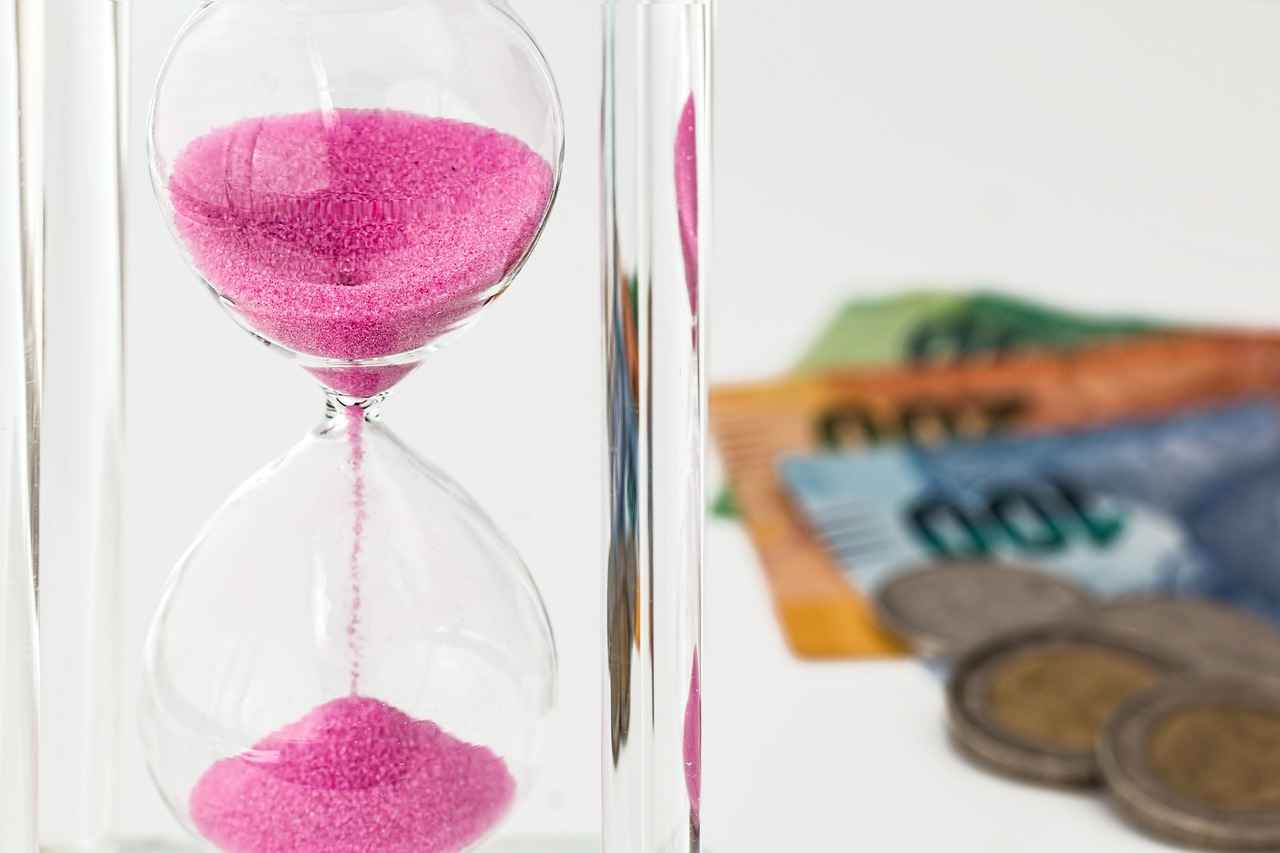
What Are the Risks of Investing in Diamonds?
Investing in diamonds can be a lucrative opportunity, but it is imperative to understand the risks involved to make informed decisions. This section will delve into the potential pitfalls of diamond investment and provide strategies to mitigate these risks effectively.
The diamond market is known for its volatility. Prices can fluctuate significantly due to various factors, including economic conditions, consumer demand, and changes in supply. For instance, during economic downturns, luxury goods like diamonds often see a drop in demand, leading to price declines. Understanding these market dynamics is essential for any investor.
One of the most significant challenges in diamond investment is liquidity. Unlike stocks or bonds, diamonds can take time to sell, and finding the right buyer may not always be easy. Investors should be prepared for the possibility that they might need to hold onto their diamonds longer than anticipated. To navigate this, consider investing in diamonds that have a proven track record of resale value and popularity.
Another risk involves the quality of the diamond. Without proper grading and certification, investors may end up purchasing stones that do not meet their expectations or market standards. Familiarizing yourself with the 4Cs—cut, color, clarity, and carat weight—is crucial. Always seek diamonds with reputable certifications from recognized grading laboratories to ensure you are making a sound investment.
Staying informed about market trends is vital for diamond investors. Changes in consumer preferences can drastically affect the desirability of certain diamond types. For instance, the rise of lab-grown diamonds has shifted some buyers’ focus away from natural stones. Investors should regularly research and adapt their strategies to align with current trends.
The diamond industry, like many others, is not immune to scams. Unscrupulous dealers may misrepresent the quality or value of diamonds, leading to significant financial losses. To protect yourself, always conduct thorough research and buy from reputable dealers. Look for reviews and testimonials, and consider getting a second opinion on any significant purchase.
Lastly, the risk of theft is a serious concern for diamond investors. Proper insurance is essential to safeguard your investment against loss or damage. Ensure that your diamonds are insured for their full value and stored securely. This can provide peace of mind and protect your assets in the event of unforeseen circumstances.
In summary, while investing in diamonds can be rewarding, it is crucial to be aware of the risks involved. By understanding market volatility, liquidity issues, quality concerns, market trends, potential scams, and insurance needs, investors can take proactive steps to mitigate these risks and enhance their chances of a successful investment.
Market Volatility
The diamond market is known for its volatility, influenced by a multitude of factors that can cause significant price fluctuations. Understanding these factors is essential for investors looking to navigate this intricate landscape successfully. In this section, we will explore the various elements that contribute to market volatility and how they can impact your diamond investments.
- Global Economic Conditions: Economic downturns or booms can dramatically affect consumer spending power. During recessions, luxury items like diamonds may see decreased demand, leading to lower prices. Conversely, a booming economy often results in increased demand and higher prices.
- Supply Chain Disruptions: The diamond supply chain is susceptible to disruptions caused by geopolitical tensions, natural disasters, or mining challenges. Such disruptions can lead to scarcity, driving prices up.
- Consumer Trends: Shifts in consumer preferences, such as a growing interest in ethical sourcing, can influence demand for specific types of diamonds. For instance, lab-grown diamonds have gained popularity, which can affect the market for natural diamonds.
- Investment Trends: As more investors turn to diamonds as an alternative asset class, the influx of capital can cause price spikes. However, if investor sentiment shifts, it can lead to rapid sell-offs, further increasing volatility.
Investing in diamonds requires a keen awareness of how market fluctuations can impact the value of your holdings. Here are some key considerations:
- Price Appreciation: In a stable or growing market, diamonds can appreciate significantly in value, offering substantial returns. However, in a volatile market, prices can drop unexpectedly, leading to potential losses.
- Liquidity Risks: Selling diamonds can be challenging, especially during market downturns. A lack of buyers can force sellers to lower their prices, resulting in losses.
- Long-Term vs. Short-Term Investments: Understanding your investment horizon is crucial. Diamonds can be a stable long-term investment, but short-term volatility can pose risks to those looking for quick returns.
While market volatility is an inherent risk in diamond investing, there are strategies you can employ to protect your investments:
- Diversification: Just like any other investment, diversifying your diamond portfolio can help mitigate risks. Consider investing in different types of diamonds, such as colored diamonds or various sizes and qualities.
- Stay Informed: Keeping abreast of market trends and economic indicators can help you make informed decisions. Regularly consult market reports and expert analyses to stay ahead of potential fluctuations.
- Work with Experts: Partnering with reputable dealers and appraisers can provide valuable insights and help you navigate the complexities of the diamond market effectively.
In conclusion, while the diamond market presents opportunities for significant returns, it is also fraught with risks due to its inherent volatility. By understanding the factors that contribute to market fluctuations and implementing strategic measures, investors can better position themselves to make informed decisions in this dynamic environment.
Liquidity Concerns
Liquidity is an essential aspect of any investment strategy, and for diamond investors, it presents unique challenges. The diamond market is not as liquid as stocks or bonds, making it crucial for investors to understand the intricacies of buying and selling diamonds. This section will delve into the challenges faced when attempting to sell diamonds and provide insights on how to navigate the market for optimal returns.
Liquidity refers to the ease with which an asset can be converted into cash without significantly affecting its price. For diamond investors, liquidity is particularly important due to the nature of the market. Unlike more traditional investments, diamonds are not traded on a centralized exchange, which can lead to challenges in finding buyers.
- Limited Market Access: The diamond market is fragmented, with many buyers and sellers operating independently. This can make it difficult to find a willing buyer when you want to sell.
- Price Transparency: Unlike stocks, diamond prices are not publicly available, leading to price discrepancies and making it hard to assess a fair market value.
- Emotional Attachment: Diamonds often carry sentimental value, which can complicate the selling process. Sellers may overvalue their diamonds based on personal connections rather than market value.
To successfully navigate the diamond market and enhance liquidity, investors should consider the following strategies:
- Research and Education: Understanding the diamond market, including current trends and pricing, can help investors make informed decisions. Knowledge of the 4Cs (cut, color, clarity, and carat weight) is essential.
- Networking with Professionals: Building relationships with reputable jewelers, appraisers, and diamond dealers can provide valuable insights and access to potential buyers.
- Utilizing Online Platforms: Online marketplaces and auction sites can broaden the reach for selling diamonds, connecting sellers with a global audience.
Timing can significantly influence the liquidity of your diamond investment. Monitoring market trends and understanding seasonal fluctuations in demand can help investors choose the right moment to sell. For example, certain times of the year, such as holidays, may see increased demand for diamonds, potentially allowing for higher selling prices.
Obtaining a professional appraisal can provide a credible valuation of your diamond, making it easier to negotiate with potential buyers. A reputable appraisal not only reinforces the value of your diamond but also builds trust with buyers, enhancing the likelihood of a successful sale.
In summary, while liquidity presents challenges for diamond investors, understanding the market dynamics and employing strategic approaches can help navigate these obstacles. By being informed and proactive, investors can maximize their chances of achieving optimal returns when selling their diamonds.
Frequently Asked Questions
- What qualifies as an investment-grade diamond?
Investment-grade diamonds are typically those that meet high standards of quality based on the 4Cs: cut, color, clarity, and carat weight. They are rare, have a strong market demand, and are likely to appreciate in value over time.
- Why should I consider investing in diamonds?
Investing in diamonds can be a smart way to diversify your portfolio. They often hold their value well and can serve as a hedge against inflation, making them a unique asset compared to traditional investments.
- How do I choose the right diamond dealer?
When selecting a diamond dealer, look for reputable sellers with positive reviews, transparent pricing, and certifications from recognized grading labs. Doing thorough research can save you from potential pitfalls.
- What is the importance of diamond certification?
Certification verifies a diamond’s quality and authenticity. It provides assurance that the diamond has been graded by a reputable lab, which is crucial for making informed investment decisions.
- How should I store and insure my diamonds?
Diamonds should be stored in a secure place, such as a safe or safety deposit box. Insuring them protects your investment against loss or damage, so consider policies that specifically cover high-value items.
- What are the risks associated with diamond investment?
The diamond market can be volatile, and liquidity can be a concern when trying to sell. Understanding these risks and having a clear exit strategy can help you navigate potential challenges.

